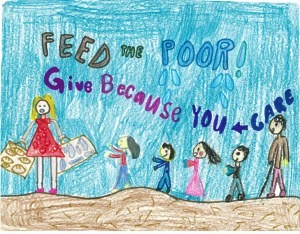According to the U.S. Department of Labor, the unemployment rate for post-9/11 veterans in November 2016 grew to 4.8, up over a point from the same time last year. With all military services continuing to engage in troop reduction, the number of unemployed veterans may see an even bigger increase in the years to come. But no veteran needs to face the daunting search for employment alone.
Check out these 7 organizations working to help veterans find meaningful employment.
7 Programs Working to Reduce Veteran Unemployment
1. USO Transition 360 Alliance – Hire Heroes USA
In this program transition specialists work one-on-one with transitioning service members to set career goals and strengthen their resumes. The program also sponsors transition workshops to help improve networking and interviewing skills and creating job search plans. Registered users can also use the Hire Heroes job board to connect with employers interested in hiring transition service members, veterans and their spouses. Interested applicants can register on the USO website.
2. Corporate America Supports You (CASY)
Founded in 2010, CASY’s mission is to attract transitioning service members, veterans and members of the National Guard and Reserves and provide the services and training necessary for job placement. Their Train2Hire Program provides opportunities for skills training. Their Recruiter Connect™ Program connects job candidates with corporate and small business recruiters. CASY’s services are provided at no cost to veteran applicants. Since its inception, CASY has helped more than 22,000 applicants find jobs. Interested veterans can get started right away by visiting the CASY website and registering for their services.
3. NS2 Serves
Established in 2013, NS2 Serves trains and employs veterans in high-tech careers. The program serves post-9/11 service members, reservists and Gold Star spouses who meet program requirements. The full-time paid training provides instruction in “world-class software solutions that support U.S. national security, leading to official SAP certifications.” Applicants are accepted on a semi-annual basis. Apply on the NS2 Serve website.
4. Helmets to Hard Hats
Veterans and service members interested in a career in the construction industry can register with Helmets to Hard Hats. In addition to job boards with veteran-only job postings, H2H offers federally approved apprentice programs at no cost to veterans, and because it is federally approved, GI Bill benefits can be used to supplement income during the apprenticeship process. Interested applicants can get more information and register by visiting the H2H website.
5. Wall Street War Fighters
Based in Philadelphia, Wall Street War Fighters offers a 6-month training program that provides class work, field work, exam preparation and testing, mentorship, apprenticeships and internships for veterans interesting in pursuing careers in the financial industry. The training program includes housing, food, transportation to and from training and job interviews, professional clothing and a small stipend at no cost to accepted participants. Veterans interesting in the program can learn more at the organization’s website.
6. Iraq and Afghanistan Veterans of America (IAVA)
The largest post-9/11 veteran’s organization, IAVA uses research and in-person and online programming to help veterans connect with employers, industry experts, mentors and other employment resources. Participants in the VetsRising Career Bootcamps receive personalized assistance developing and reaching career goals. Joining is easy, just visit the IAVA website.
7. Startup Veterans
In the years since World War II, the number of veteran starting new businesses has tumbled from 49% to just 6%. Startup Veterans aims to change that. Designed to support veterans with a business idea, the program offers 16 weeks of entrepreneurial development training. The program has an online application, and selected applicants will be interviewed by phone before final acceptance. Find out more about the application process and requirements on the Startup Veterans website.
.jpg)









